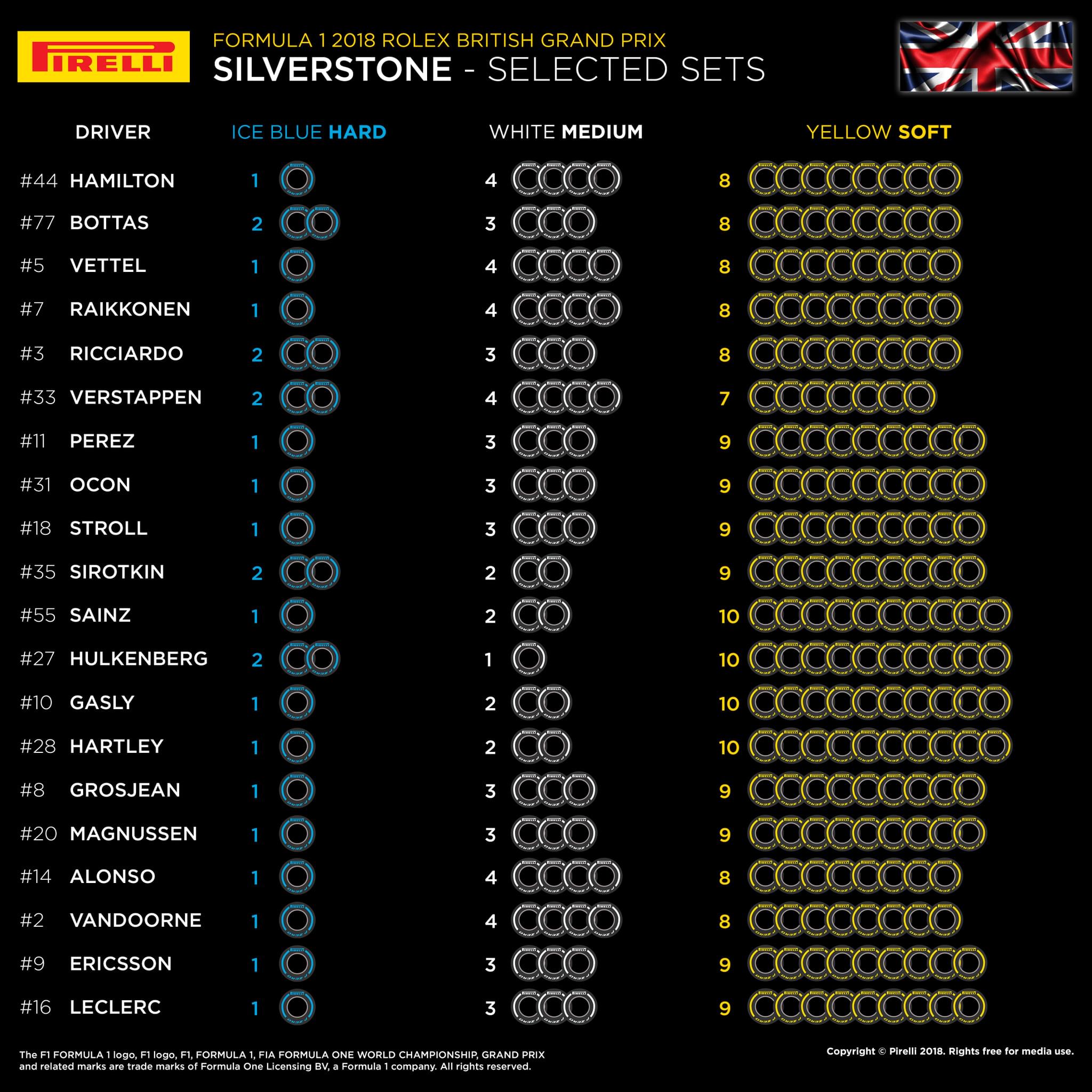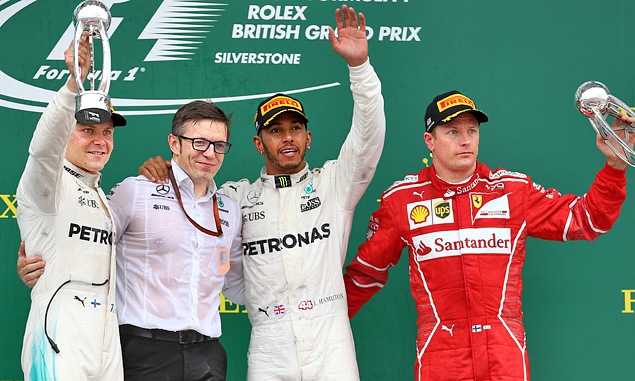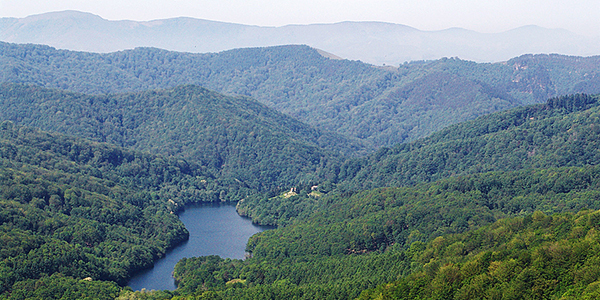
Tire Choices

2017 Results
Qualifying

Race


2017 Pole Lap
2017 Race Highlights





Maybe not, in 2011 they used DRS in Turn 1 and even through Maggotts.FrukostScones wrote: ↑02 Jul 2018, 14:02DRS through turn 1.? Is halo going to save them. Nuts. If someone dares he will crash.
This car had no power. 10 kph slower with DRS open, compared to V6.MtthsMlw wrote: ↑02 Jul 2018, 14:07Maybe not, in 2011 they used DRS in Turn 1 and even through Maggotts.FrukostScones wrote: ↑02 Jul 2018, 14:02DRS through turn 1.? Is halo going to save them. Nuts. If someone dares he will crash.
https://www.youtube.com/watch?v=p5nmfh4boUA

I don't know how the weather will be, but a high temperature track would favor blistering on the Hards. The harder the tyre (and therefore less wear) the higher the temperature (especially on tracks like Silverstone where the tyres need to sustain high energies). That's why blistering was an issue primarily on the Softs in Austria.
exactly my thoughts... for Austrian GP.
If it stays like it currently is - and the forecasts I've seen suggest it will - then there will be no rain about at all. We haven't had a drop of rain for quite some time now. I'd expect the track temps to be very high which could play in to Ferrari's hands. A bit of cloud might develop as the day goes on which might mean the temps vary during the race - that could make things interesting as it might move the advantage around.
That's not really correct, track and ambient temps are only part of the equation.LM10 wrote: ↑02 Jul 2018, 14:28I don't know how the weather will be, but a high temperature track would favor blistering on the Hards. The harder the tyre (and therefore less wear) the higher the temperature (especially on tracks like Silverstone where the tyres need to sustain high energies). That's why blistering was an issue primarily on the Softs in Austria.
But due to the thinner tyre depth blistering most probably won't be an issue anyway this time.
https://www.pirelli.com/tyres/en-ww/mot ... omepage-f1The second-toughest tyre in Pirelli’s range is designed for the circuits that put the highest energy loadings through the tyres, with fast corners or abrasive surfaces, and are often characterised by high ambient temperatures. The compound takes longer to warm up, but offers maximum durability – which frequently means that it plays a key role in race strategy. This is a high working range compound.